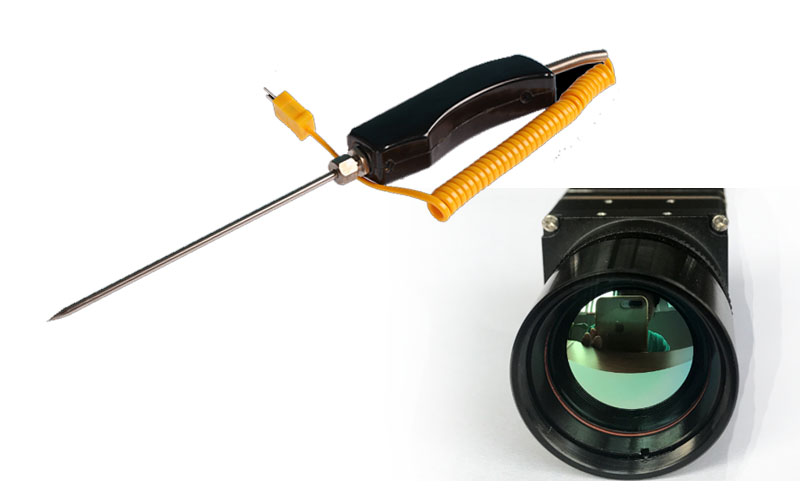
 Temperature sensor: contact or non-contact?
Temperature sensor: contact or non-contact?
Temperature sensor: contact temperature sensor or non-contact temperature sensor?
Temperature is the most widely measured physical property of sensing technology. There are many temperature sensors on the market, but you don't want to choose products only according to their measuring range and price. The result will not be very good. So what's your best course?
The important dividing line between temperature sensing and many other sensing technologies is: Can you touch the object or process fluid of interest? Now that you have answered this question as it relates to your own application, you can continue and evaluate the various devices competing for your approval.
When should contact temperature sensors be used?
1. As long as you can have good thermal contact with objects or fluids
2. If the expected temperature is below~1700 ° C or above~40 ° C
Good thermal contact means that the sensor and the object or fluid are at or very close to the same temperature. (This discussion applies to both process fluids and discrete objects. For convenience, we will always use the term object.) This usually happens when the size and mass of the sensor is small compared with the object being measured. You should maintain this physical contact by welding, soldering, clamping, bonding, or using some other reliable method to fix the sensor to the object.
These two temperature limits are somewhat arbitrary. At 1700 ° C, platinum alloy thermocouples begin to lose calibration rapidly, and wires and ordinary insulating materials may begin to soften. Type B platinum and tungsten rhenium thermocouples and other special equipment can be used at higher temperatures, but only by high-temperature measurement experts. At the lower limit of – 40 ° C, you begin to experience low temperatures. Many contact sensors operate well below this temperature, but again, such applications are best left to experts.
The most common contact temperature sensors are liquid glass thermometer, thermocouple, RTD temperature sensor and thermistor temperature sensor. They are usually enclosed in a protective metal or ceramic sheath, called a thermowell, so that they can penetrate the process barrier and can be easily pulled out for calibration or repair without exposing the process and/or maintenance personnel to adverse conditions. When you need to select a contact temperature sensor, Figure 1 should help you make an initial ranking of candidate equipment.
When should a non-contact temperature sensor be used?
First, remember that although non-contact temperature sensors come in many styles and types and are known by various names, they are radiation thermometers if they operate according to Planck's law of thermal radiation. They are called radiation pyrometers, IR pyrometers, optical pyrometers, IR thermometers, thermal imagers, etc. They can be battery powered portable equipment, fixed installation or online process monitoring equipment.
You will see that the list of application fields is longer than the contact temperature sensor, because the non-contact sensor does not have to be at the same temperature as the object. Select and use this type when:
1. The object is moving
2. Contact will damage objects or sensors (for example, extreme heat, corrosivity, abrasiveness, etc.)
3. Contact with an object will significantly change its temperature
4. Large, observable area measurement is desirable
5. Objects are too far away or difficult to approach, such as in a special atmosphere or in outer space (such as stars and galaxies)
It is difficult to compare non-contact temperature sensors because only three global standards describe the characteristics of radiation thermometers. Figure 2 may be helpful when your application requires non-contact temperature sensing.

If you are choosing a reliable temperature sensor, make sure you know what you are doing. Contact the temperature expert of the company according to more information you need to know. Tel./WeChat 18717811268 Huang Gong Email sales@weilianchina.com

